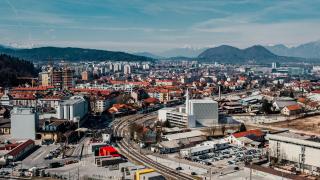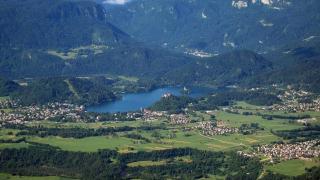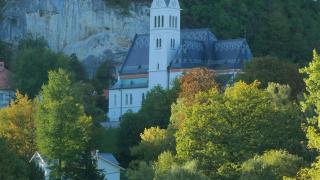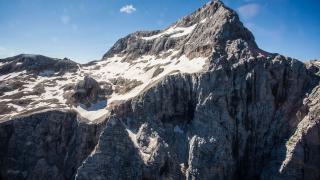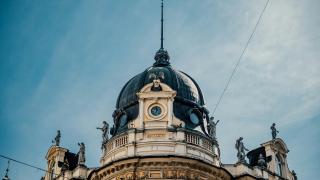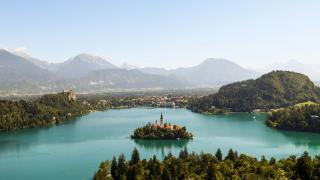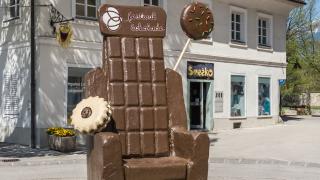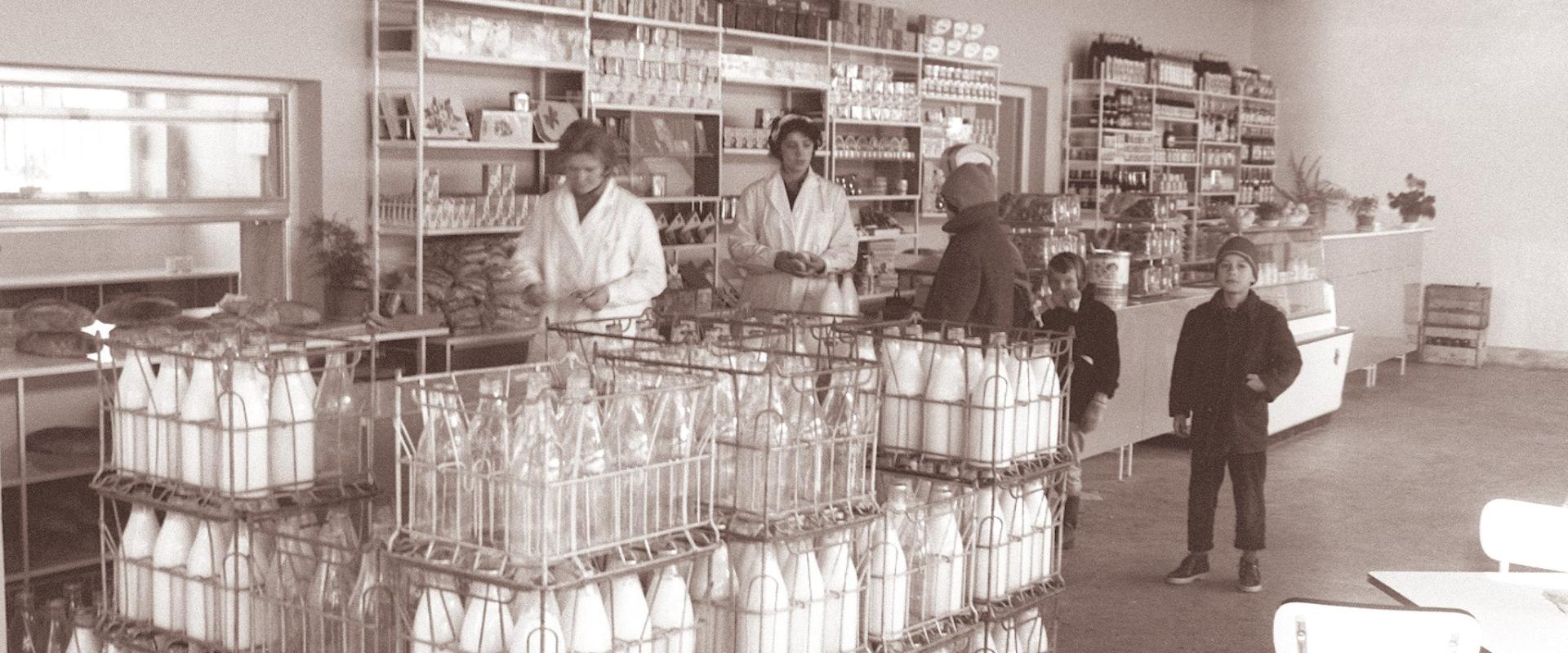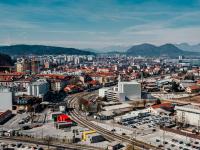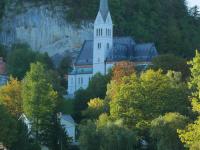Euro Essentials
Slovenia uses the euro (EUR) as its official currency. The euro replaced the Slovenian tolar in January 2007. All prices in shops, restaurants, and hotels are listed in euros.
Benefits for travelers from the Eurozone:
- No currency exchange needed for eurozone visitors
- No conversion fees for euro payments
Euro denominations in Slovenia:
- Coins: €2, €1, 50c, 20c, 10c, 5c, 2c, 1c
- Notes: €5, €10, €20, €50, €100, €200, €500
Slovenian euro coins feature national symbols. The €1 coin shows Primož Trubar, a Slovenian Protestant reformer. The €2 coin has France Prešeren, a national poet. Lower denomination coins display Mount Triglav, Lipizzaner horses, and other Slovenian motifs.
ATMs dispense euros and are widely available in cities like Ljubljana and Maribor. Small shops and rural areas may prefer cash. A coffee in Ljubljana costs about €2. Card payments are accepted in most urban locations. Always check for the euro symbol (€) on price tags.
Changing Money: What to Expect
Euro (EUR) is the only legal tender in Slovenia. Currency exchange is available at Ljubljana Jože Pučnik Airport, major train stations, and border crossings. Banks in cities like Ljubljana and Maribor offer currency exchange during business hours, usually 9:00–17:00 on weekdays. Exchange offices (menjalnica) are found in city centers, shopping malls, and tourist areas. Hotels may exchange small amounts but rates are less favorable.
Best rates are usually at banks and official exchange offices. Airport and hotel desks often charge higher commissions or offer less competitive rates. Typical commission fees range from 1% to 3% or a flat fee of €2–€5 per transaction. Always check the posted rate and ask about additional charges before exchanging.
ATMs (bankomati) are widespread in Slovenia. They are available 24/7 in cities, towns, and even some rural areas. Most international cards are accepted. ATMs usually offer better rates than exchange offices, but your home bank may charge withdrawal fees.
Card payments are widely accepted in urban areas. In rural regions or at small vendors, cash is often required. Bringing some euros is practical, but exchanging large sums on arrival is not necessary. Always keep small denominations for buses, markets, and tips.
Paying Your Way: Cards and Cash
Credit and debit cards are widely accepted in Slovenia. Visa, Mastercard, and Maestro work in most shops, hotels, and restaurants. Contactless payments are common in Ljubljana, Maribor, and other cities. Apple Pay and Google Pay are available at many larger retailers and chain stores.
Cash is still important in Slovenia. Small shops, bakeries, and rural guesthouses may only accept cash. Open-air markets in Ljubljana and Piran often require euros for purchases. Public toilets and some parking machines in smaller towns may not take cards.
ATMs (bankomati) are easy to find in cities, airports, and shopping centers. Most ATMs offer English, German, and Italian language options. Withdrawal fees depend on your card issuer, not the Slovenian bank. ATMs dispense €10, €20, and €50 notes.
Carry small denominations for convenience. Some cafés and kiosks may not accept €50 notes for small purchases. Coins (€1, €2, 50c, 20c, 10c) are needed for bus tickets and vending machines.
- Cards accepted: Visa, Mastercard, Maestro
- Contactless: Widespread in urban areas
- Cash needed: Rural areas, markets, small shops
- ATMs: Available in all major towns
- Tip: Avoid dynamic currency conversion at ATMs for better rates.
Banking Hours and ATM Know-How
Banks in Slovenia usually open Monday to Friday, 8:30–12:30 and 14:00–17:00. Saturday hours are rare and limited. Most banks close on Sundays and public holidays.
ATMs (bankomati) are widely available in cities like Ljubljana, Maribor, and Celje. Smaller towns and tourist areas also have ATMs. Rural villages may have limited access.
ATM details in Slovenia:
- Most ATMs offer English, German, and Italian language options.
- Daily withdrawal limits range from €200 to €400, depending on your bank.
- ATMs accept Visa, Mastercard, Maestro, and Cirrus cards.
If your card is lost or swallowed:
- Contact your home bank immediately.
- For Slovenian banks, call NLB (+386 1 477 20 00) or SKB (+386 1 471 55 55) for card blocking.
- Most ATMs display emergency contact numbers.
Cash is dispensed in €10, €20, and €50 notes. Coins are available for smaller amounts.
Smart Money Moves: Traveler Tips
Be alert in busy areas like Ljubljana’s Prešeren Square and the Central Market. Pickpocketing can occur, especially during festivals. Keep wallets and phones in front pockets or zipped bags.
Carry both a card and some cash. Small shops in villages or mountain huts may accept only cash (gotovina). For example, a coffee in a rural café costs around €1.50–2.00.
Split your money. Store emergency cash (e.g., €50) separately from your main wallet. Use a money belt or hotel safe.
Avoid ATM scams. Use ATMs (bankomati) attached to banks, not standalone machines. Decline “dynamic currency conversion” to avoid extra fees.
Check receipts. Always review your bill (račun) before paying, especially in busy bars or taxis.
Useful Slovenian phrases:
- “Koliko stane?” (How much does it cost?)
- “Ali sprejemate kartice?” (Do you accept cards?)
- “Kje je najbližji bankomat?” (Where is the nearest ATM?)
Tipping is optional but appreciated. Rounding up or leaving 5–10% is common in restaurants.
